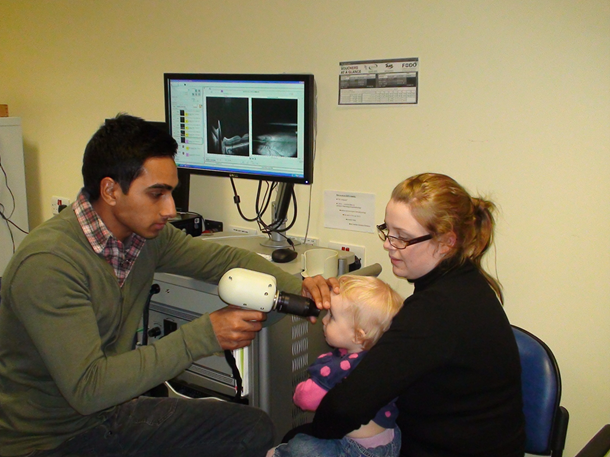Rapid Diagnosis in the Palm of the Hand
Growing role in diagnosis and monitoring of infant and young child eye conditions. Howard Larkin reports

Howard Larkin
Published: Wednesday, September 1, 2021
 Image 1: The hand-held OCT probe is pointed to the child’s eye, enabling scans in children who
Image 1: The hand-held OCT probe is pointed to the child’s eye, enabling scans in children who